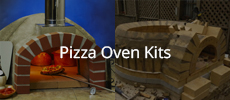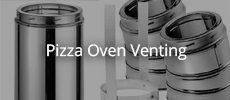My wife and a friend who came over to watch the dome closing refered to it as "Darlene the Dome" so I guess it is a she. I think it needs a more italian name...
Yes, I am planning on smoothing the outside and filling all of the gaps, but I am going to wait until the forms are removed so I can do as much cleanup as possible inside.
Drake
X
-
Is it a "he" or a "she"
Molto buono. Complineti!
Drake, it looks great. In addition to pointing the inside joints, are you going to point the external joints, then give it a nice smooth mortar layer?
Pizza just around the corner -- it's going to cook wonderfully.
Now offically, an oven is masculine (Forno), but with all the effort going into everyone's ovens, perhaps we can agree to call them she.
"She's" going to cook great. As opposed to "he" or "it".
Any ideas?
JamesLast edited by james; 07-12-2006, 08:52 PM.
Leave a comment:
-
Closing the Dome!
I closed the dome tonight!! Yea!
I had been cutting trapezoidal bricks for the last few days, and I drystacked them and numbered them (thanks for the idea Fio). It worked well for the first two rings, but I had to cut some more when I got to the last two rings.
Next I plan to remove the forms (after it is all dry) then try to point in some mortar to fill the gaps. Then cure cure cure. Then Fire, then...whew still a few more steps!
Drake4 Photos
Leave a comment:
-
Heat Stop
I used heat stop for my last fireplace project. I hate mortar, but this stuff is great. it mixes easily, and spreads like peanut butter, and sets up hard.
I don't know how the Italian stuff James sells does, but Heat-stop is worth the (admittedly high) price.
Leave a comment:
-
I am using a refractory mortar (heat stop). I need to go get another bag today, that is 3 bags at $67 a pop...ouch.
Drake
Leave a comment:
-
Break the vent again ASAP!
(M) Hi, Drake, the actual castings look good not withstanding the breaks, but BEFORE the repair mortar hardens,
(M) Check out:
 RUTLAND Products help you enjoy and maintain your fireplace and stove! Trusted in the home and by chimney service professionals for over 130 years!
RUTLAND Products help you enjoy and maintain your fireplace and stove! Trusted in the home and by chimney service professionals for over 130 years!
(M) Your vent is fine for compressive strength even with the cracks, but the mortar you used, if not a true refractory mortar, will likely crack again under thermal stress. Why worry? Only because you'll get smoke through the cracks and if you don't clad or seal your oven, the cracks will also be a path for rain water.
(M) I didn't have the URL for "Meeks" (spelling?), another similar Mfg. but the URL for Rutland describes this true furnace cement as useful for securing metal to metal. I used it for brick to brick on my vent and chimney cap. Rutland may have an even better product than the one described below for your purpose. But I am pleased with the heat cure and strength.
(M) If you are reluctant to try to separate the vent where you've mortared it for fear of breaking it elsewhere, keep this product in mind as a potential overlay should you start to leak smoke.
FURNACE CEMENT Resists 2000?F heat -
Item # 64, 65, 66, 67
A ready-mixed, high-temperature silicate cement with a finely ground smooth consistency. This material has the appearance and texture of fine mortar, and will withstand temperatures to 2000?F. Can be used anywhere a high-temperature resistant adhesive is needed. Especially for bonding and sealing metal to metal joints. When air dried and cured according to directions, this cement becomes as hard and durable as firebrick. Primarily, a metal to metal sealant that may be used for filling joints between masonry and metal as this material strongly resists separating from the metal, unlike so many similar products. Use it to make repairs to the firebrick of wood or coal-burning stoves, or to fill gaps between the firebrick and the stove metal. Use to fill space between the glass fire-screen frame and the fireplace. Used in home or industry for making smoke and gas-tight joints when installing or resetting furnaces, stokers or oil burners. Also has been used as a temporary muffler repair. Contains no asbestos.For a product with a heavier consistency, try our Chimney Sweep?Brand Furnace Cement which has a thick sandy texture.
Ciao,
Marcel
Leave a comment:
-
Here are some more pictures with the vent in place.
Drake4 Photos
Leave a comment:
-
The broken vent worked out fine! It provided a unique "cutaway" view of the vent in place (see attachement).Drake3 Photos
Leave a comment:
-
Hi All,
The vent broke all the way through when I cured it in the oven, but I actually think that is better than just a crack since now I can put some mortar in there.
I put another ring on and put the lintels in the doorway.
Drake3 Photos
Leave a comment:
-
Looks great
Drake,
Your casting looks great. I'm sure it'll do fine.
Keep us posted; I'll do the same.
Cheers,
- Fio
Leave a comment:
-
Grate oven, but the roast looks tough.
(M) That vent looks SUPER! I wish I had cast one instead of using a clay chimney liner.
I wish I had cast one instead of using a clay chimney liner. 
(M) You've got it "nailed" and I'm sure that the rest of your work will be equally professional.
Ciao,
Marcel
Leave a comment:
-
Hi Marcel,
As for curing, I cured the first lintels (with the rebar for 4 days, longer even than reccommended in the instructions from the manufactrer.)
The last lintel without the rebar I really did not cure for long enough, but it was mostly an experiment.
The castable mix I am using does appear to be an insulating concrete, so I agree that it may not have been the best choice for the lintel, though I think it will be fine with the rebar in it. I could not get my hands on a non-insulating castable. Perhaps the angle iron is a better way to go, but since I was going to cast a vent anyway, the lintel seemed the most cost-effective.
I suppose I could have used the portland cement/fireclay mix, but I wanted to use refractory products...
I am in the process of curing the vent now, I have the whole beast in my oven inside (see attached picture...) There is no rebar in the vent at all as it will rest on the lintels. I think it is all going to be fine, but if I had to do it over, I would probably consider a different mix, or just use the angle irons and sitck with this mix for the vent.
Drake1 Photo
Leave a comment:
-
Consider a different concrete for your lintel
(M) Drake, the first thing that struck me about your posting today is the short time you allowed your lintel to cure. I would allow at least 4 days before I subjected it to even a low fire. Masonry curing is not typically a linear function of time but 2 days is way too short a period to subject your lintel to either shear stress, or thermal stress.
(M) Not withstanding the likelihood of greater strength in the concrete you use for your casting if you let it cure properly, I'd consider a different mix.
(M) I mentioned with my last posting that I'd constructed a detailed reply only to lose it. Well, Patrick suggested a save in another program so here goes!
Well, Patrick suggested a save in another program so here goes!  Done.
Done.  We probably should simply answer in a word program or even email and then Copy-Paste that whole thing here.
We probably should simply answer in a word program or even email and then Copy-Paste that whole thing here.
(M) So, Drake, what I lost mentioned my doubts about the strength of your concrete mix. It looks like it has perlite, or vermiculite? Not an agrigate designed for strength, but for insulation.
(M) If your lintel is relatively light, I'd infer a weak concrete; if heavy, then probably a stronger mix provided you used enough cement for the adhesive!
(M) If I were making a casting such as yours for the re-bar included vent that gets quite hot, or for the re-bar included lintel that supports weight, I'd probably use a similar mix as recommended for refractory mortar for your dome bricks but I would substitute gravel for 3 or even 4 of the 8 parts sand: e.g. 4 parts sand, 4 parts gravel, 3 parts cement, 2 parts fire clay.
(M) Since I made no casting, I couldn't vouch for this ratio but I know that my refractory mortar is really strong.
Ciao,
Marcel
Leave a comment:
-
This morning I pulled the cooled, cured, rebar-free lintel off the grill and put it's ends on two bricks and put some weight in middle. It broke in half quite easily.Originally posted by DrakeRemorayI think I will test it for strength a little tomorrow when it cools down.
I then did the same thing with one of the cracked lintels with rebar, and it was able to hold my entire weight (200lbs and growing). So it seems that the rebar is a good idea even if it did make a crack in the lintel.
I will move ahead with the dome using the first two lintels this weekend...
Drake
Leave a comment:





Leave a comment: